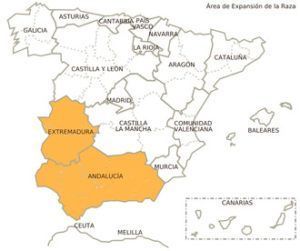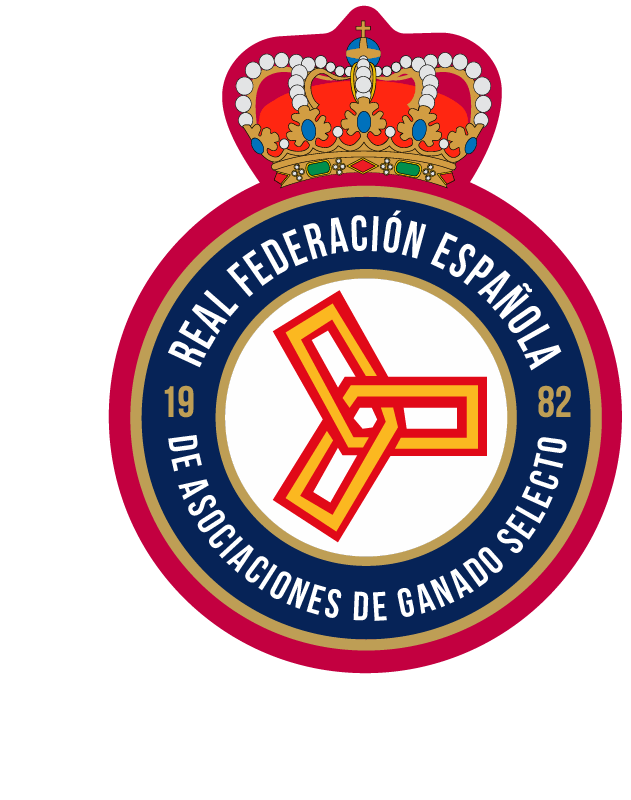GENERAL CHARACTERISTICS
It is an attractive animal revealing vigour, strength and femininity. It is a hypermetric breed, long and lank, with a subconvex profile, arched and backward horns and large ears.
The trunk should be long and deep, which determines a great respiratory and digestive capacity. The withers are fine and slightly protruding, the chest is broad at the base and the sternal keel is evident. The coat is mottled white on a red background or vice versa, but white mottling on a black background is also permitted (starling). The tail is set slightly above the tip of the ischiums.
The flanks are deep, arched and elegant.
The croup has a strong connection with the back, being broad, strong, long and slightly sloping.
The limbs are strong, wide apart and shapely. The forelegs are straight and well plumb and the hind legs are parallel, well apart and almost perpendicular from hock to fetlock when viewed from the side.
The mammary system has a well-developed and well implanted udder, but of medium depth and with well positioned and well defined teats.
Males belonging to the Florida breed have a shorter head length and more accentuated convexity of the front, with a strong and developed neck without losing length.
PRODUCTION CHARACTERISTICS AND EXPLOITATION SYSTEMS
The exploitation systems for this breed range from semi-extensive in mountain areas to free stall systems, including semi-intensive systems in lowland and countryside areas.
The Florida breed is characterised by its high productivity combined with its hardiness, which allows it to play an important environmental role, playing a special role in controlling the excess of shrubby phytomass in these areas. In other areas, such as the agricultural countryside of Andalusia and Extremadura, this breed plays a fundamental role in the use of agricultural by-products and waste.
In the traditional areas of exploitation of the breed, a strong Mediterranean pastoral culture is preserved. In the gastronomic field, its products are basic to the preparation of traditional foods of these regions (goat’s cheese and kid stew).
GEOGRAPHICAL DISTRIBUTION
Initially, it was limited to the middle area of the Guadalquivir Valley in the province of Seville; however, in the last 25 years, due to its exceptional qualities, it has spread throughout the province of Seville, a large part of the provinces of Cordoba and Badajoz, and there are also numerous herds in the other Andalusian provinces and in Caceres.

INFORMATION
 Tell us about your characteristics and needs so that we can offer you the solution that best suits your context. Contact us if you have any clarifications or suggestions for products or services that you need.
Tell us about your characteristics and needs so that we can offer you the solution that best suits your context. Contact us if you have any clarifications or suggestions for products or services that you need.
Presupuesto total: 543.404,60 euros. Cofinanciado UE al 80% por el Fondo Europeo Agrícola de Desarrollo Rural- FEADER y al 20% por el MAPA. La Dirección General de Desarrollo Rural, Innovación y Formación Agroalimetnaria (DGDRIFA) es la autoridad de gestión encargada de la aplicación de la ayuda FEADER y nacional correspondiente.
https://ec.europa.eu/info/eu-
Creación de una base y estructura de comercialización e internacionalización de material genético de razas puras españolas mediante análisis de la situación actual y elaboración de plan estratégico para la exportación. El objetivo es desarrollar un análisis estratégico de la internacionalización y desarrollo de estructura y protocolos de comercialización del material genético según demanda y requisitos de países objetivos para las razas participantes del proyecto y para el conjunto de la cabaña ganadera España. Organismo responsable de contenido: miembros del GO EXPORTGEN.
 Tell us about your characteristics and needs so that we can offer you the solution that best suits your context. Contact us if you have any clarifications or suggestions for products or services that you need.
Tell us about your characteristics and needs so that we can offer you the solution that best suits your context. Contact us if you have any clarifications or suggestions for products or services that you need.
Presupuesto total: 543.404,60 euros. Cofinanciado UE al 80% por el Fondo Europeo Agrícola de Desarrollo Rural- FEADER y al 20% por el MAPA. La Dirección General de Desarrollo Rural, Innovación y Formación Agroalimetnaria (DGDRIFA) es la autoridad de gestión encargada de la aplicación de la ayuda FEADER y nacional correspondiente.
https://ec.europa.eu/info/eu-
Creación de una base y estructura de comercialización e internacionalización de material genético de razas puras españolas mediante análisis de la situación actual y elaboración de plan estratégico para la exportación. El objetivo es desarrollar un análisis estratégico de la internacionalización y desarrollo de estructura y protocolos de comercialización del material genético según demanda y requisitos de países objetivos para las razas participantes del proyecto y para el conjunto de la cabaña ganadera España. Organismo responsable de contenido: miembros del GO EXPORTGEN.










